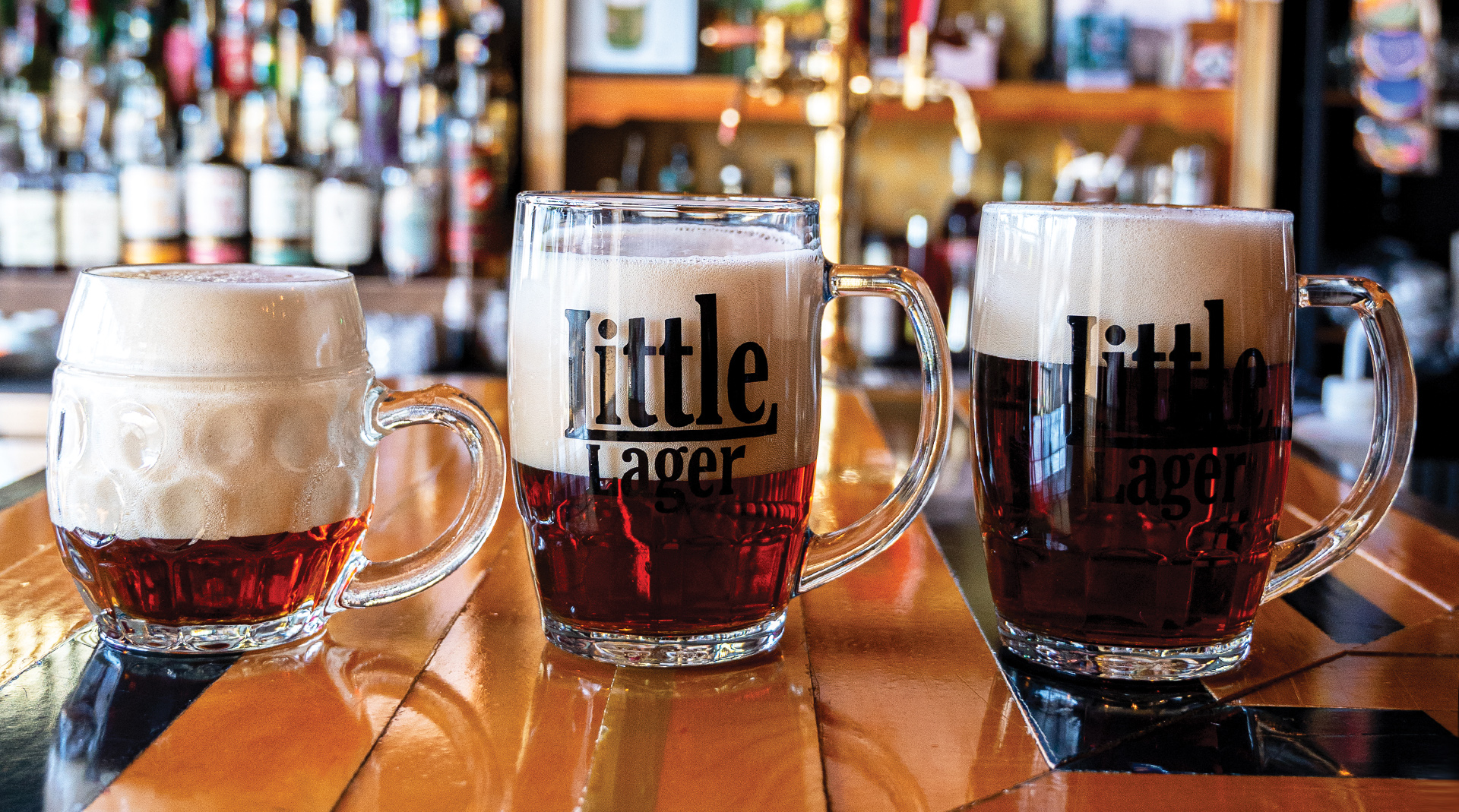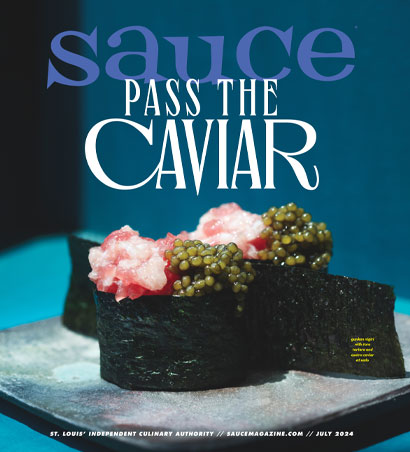Why St. Louis brewers think you should be drinking beer foam
It may seem like every beer advertisement in history exalts the alluring, even sensual, appeal of a thick and creamy layer of foam sloshing over a mug of beer. But for generations, from corner bars to college keggers, foam has been under-appreciated, maligned even. Some view a foamy head as a rip-off, occupying valuable real estate that could be better filled with more beer. Gotta get your money’s worth, right? Not so fast. The American way of pouring and drinking beer is changing as fast as your local brewpub changes their kegs on a Saturday night. Driven by craft breweries, beer nerds and an influx of bars celebrating European approaches to pouring, beer foam is now desirable.
It makes sense. Beer and foam are inseparable; you can’t have one without the other. Foam is often our first impression of the beer. Paraphrasing an old saying, Jonathan Moxey, head brewer at Rockwell Beer Co., said we drink with our eyes. “If it’s got a beautiful head of foam on it, that’s very inviting. It’s mind-blowing,” he said. Without that head, Moxey added, “It’s like a glass of iced tea with no ice in it … it’s weak sauce.”
“Aesthetically, it’s how you want your beer to look,” said Manny Negron, owner of Little Lager. “Foam makes the beer seem alive.” Negron’s postage stamp-sized bar pours a large rotation of lagers from seven Czech-made Lukr side-pull taps specifically designed to blend carbon dioxide with the beer to produce a tighter, creamier wet foam that’s as drinkable as the beer itself – without the burpiness.
American beer culture has historically valued quantity over quality. “Beer foam is definitely something you learn to appreciate the more you know about beer,” said Danielle Snowden, head brewer at Earthbound Beer. Snowden recalls pouring a beer with a good head on it, “Only to have some older gentleman tell me to fill it up all the way, and that he didn’t want any foam.” A teachable moment, perhaps, “But in the end I would always just fill it up and tell them they were missing out on the aromatics,” she said.

Jeff Hardesty, head brewer at Narrow Gauge Brewing Co., said that attitude is changing. “A lot of the foam comes from the pour,” he said. “You can have a beer that is foam-positive, but if it’s poured like a lot of bartenders do [pouring] Bud Light to the rim, that’s where a lot of the old mentality of ‘no foam’ comes from.” The new appreciation for a foamy pint is a good thing, Hardesty said, because a good head of foam is one of the crucial attributes of beer. “It helps aid in pushing some of the aroma out of the beer into the drinker’s nose … and helps with mouthfeel, adding more creaminess and bringing out more flavor profiles,” he said.
Beer aromatics and head retention are dictated by the chemistry of many components: grain, malt, hops, the percentage and type of carbonation, and even the glassware used to serve the final product. According to Snowden at Earthbound, “So many things can affect head retention, but the main one starts with your grain bill.” She brews every beer with foam-enhancing crystal malts because of their higher protein level, which she said contributes to better foam. “This adds so much to the beer while also adding so little – it’s very interesting,” she said.
Since Little Lager serves lagers from all over, Negron relies on the Lukr side-pull taps to achieve the perfect foam cap. “The typical American faucet is like an on-off switch,” he explained. “Trying to restrict the flow will produce a blast of airy foam, but it will dissipate quickly.” Foam is so integral to the Czech beer drinking experience that Little Lager serves a “milk pour,” or mliko (Czech for “milk”). This is a beverage in itself: a full glass of wet, dense foam designed to be enjoyed quickly before it settles into beer. Depending on the style of beer at hand, a milk pour can contain so much aroma and flavor in the foam that Negron said, “It can taste almost like a smoothie.”
The other variable in maintaining head retention is glassware and cleanliness. “Beer glasses are just like wine glasses in that they offer something different depending on the variety,” Snowden said. “Having a dirty glass [whether from smudges, oils or detergent] or a glass that hasn’t been cleaned properly can absolutely kill head retention.”
Jonathan Moxey at Rockwell agrees. “We can do everything right on our end to produce quality beer, but if it’s served through a dirty line or in a dirty glass it’s not going to taste great, it’s not going to look great, it’s not going to smell great,” he said. Moxey wants to see that foam atop his beer. “If you have a beer with no head on it and one that’s poured into a properly clean glass with a nice head of foam on it, you will have two different experiences drinking the exact same beer, because the foam acts as a cap on top of the beer.”
Still not convinced? Dylan Mosley, head brewer at Civil Life Brewing Co., waxes poetic on the experience of being served a perfectly presented beer with nice fat cap of foam: “It’s that bit of magic where you step off the plane and you’re on vacation and the temperature is exactly right and the air smells like an ocean breeze and your luggage comes right on the carousel and everything is perfect.”
Tags : Places, Guide to Beer, Beer, Bars
Most Recent
Drink this savory martini at The Lucky Accomplice in St. Louis
The Lucky Accomplice’s bar manager Corey Moszer is thinking outside the box …






